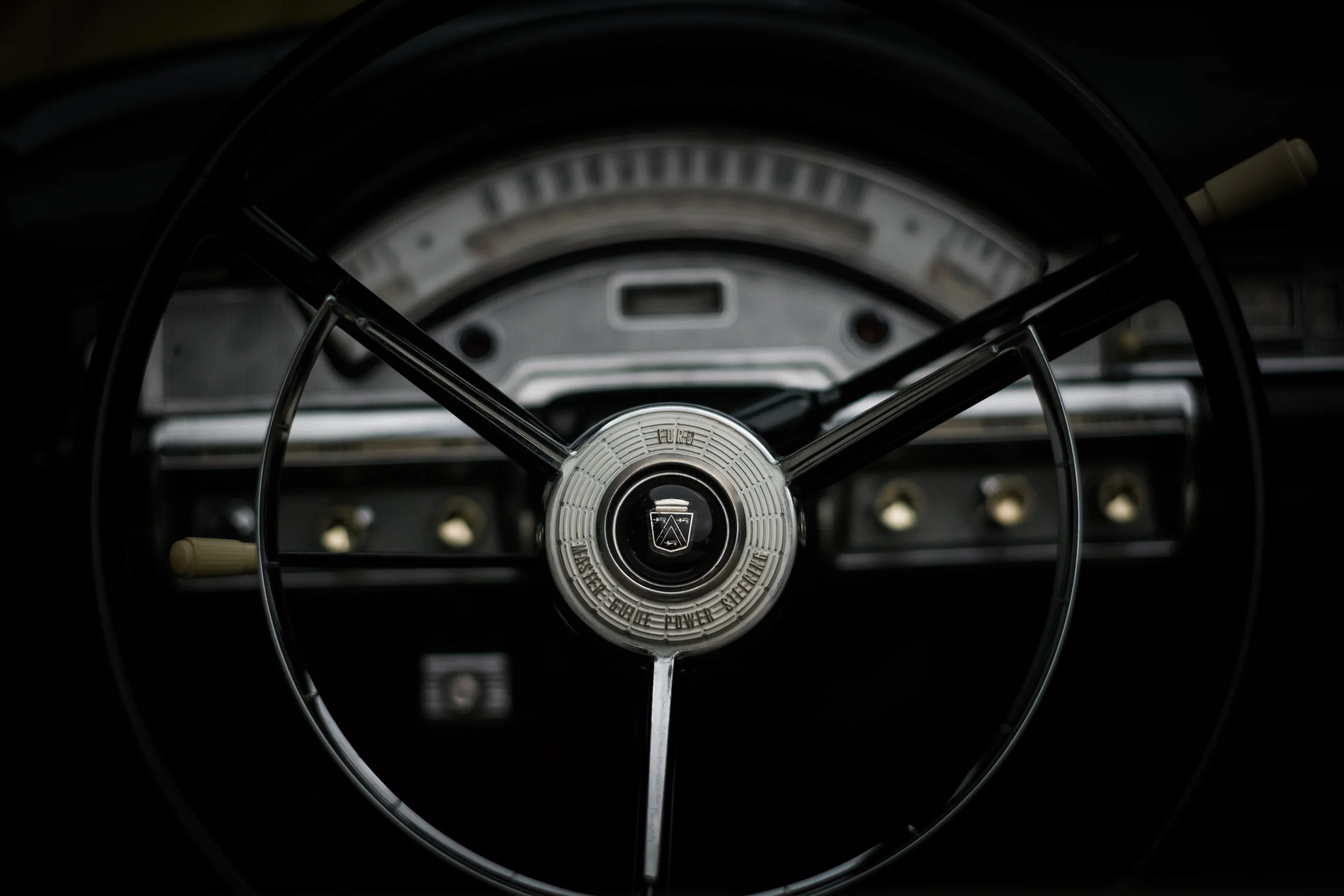1958 Ford Fairlane 500 Skyliner Retractable Hardtop










1958 Ford Fairlane 500 Skyliner Retractable Hardtop
Ford called it “The Most Exciting Car In A Generation,” and while that’s debatable, at a cost of $20 million to develop the roof alone there’s little doubt the Skyliner retractable was one of the most expensive.
- YEAR & MAKE - 1958 Ford
- MODEL NAME - Fairlane 500 V8 Skyliner
- SERIES - 51A
- BODY TYPE - 2 Door, 6 Passenger Retractable Top Coupe
- BODY BY - Ford Motor Co.
- # CYLS. - V8
- TRANSMISSION TYPE & NUMBER - Automatic, Rear-Wheel Drive
- WEIGHT - 4,094 lbs
- ESTIMATED PRODUCTION - 14,713
- HP - 265
- C.I.D. - 332
- WHEELBASE - 118″
- PRICE NEW - $3,138
The Skyliner’s idea started way back in 1949, when Ford stylist Gil Spear was so inspired by the retractable roof roof of the Chrysler Thunderbolt show car that he started sketching designs for a production version for Ford. Spear thought that a folding hardtop, combined with a pillarless coupe design like the 1949 Buick Roadmaster Riviera, would be the ideal feature to help Ford stand out among the huge field of new Postwar designs.
Spear’s original design was rejected, but in 1953 a version modified by Ford’s Chief Engineer Harley Copp was approved by William Clay Ford for the Lincoln Continental Mark II, and Ford’s Special Projects Division geared up for production with a $2.19 million budget. Ford engineer John R. Holloway led the team, with major engineering efforts overseen by Roy Butler and Ben J. Smith, whom Holloway recruited away from General Motors for the project.
It required two full years to perfect, with a fully operational and refined retractable hardtop ready by the summer of 1955. That was too long for Continental Division, however, which by then had winnowed their offerings to a single body style for 1956, a two-door coupe.
Ford was not about to write off the huge investment into the program, however, and had Special Projects launch a crash program to adapt the retractable for the Fairlane. This was no simple matter, however, as the roof had been designed specifically for the (126-inch wheelbase) Mark II, and fitting it on a 118-inch wheelbase Fairlane 500 chassis meant completely reengineering not only the mechanism, but a donor Fairlane convertible from the front doors back. Side by side, the changes between a standard Sunliner fabric roof convertible and a Skyliner folding hardtop are obvious. When erected, the Skyliner’s top is almost four inches shorter than the Sunliner’s, while the rear fenders have three inches added in length to fit the folded roof. They’re substantially taller as well.
By the New York Auto Show in December 1956, Ford had a prototype on display, then delivered the first customer car to President Eisenhower on April 14. The 18-month program to convert the Mark II design into the Fairlane 500 Skyliner cost an estimated $18 million, a stupendous figure for the time.
Ford may not have made a profit back on the Skyliner, but buyers certainly got their money’s worth, in what was the second most expensive Ford ever. Twenty relays and limit switches, eight circuit breakers, four lock mechanisms and three motors are linked with 610 feet of wiring, along with all the dash indicators and controls to go along with them. It was all surprisingly reliable and Ford claimed it was good for 10,000 cycles, but provided an emergency crank just in case.
After all that, Ford poured another $185 million into the 1958 lineup to create some harmony with style leader Thunderbird. Skyliner was among the most changed, gaining an inch in overall length to a huge 211 inches, and dropping two engines from the lineup. All big Ford V-8s were also substantially revised for 1958 with an eye towards stock car racing, with this car’s 265hp, 332-cu.in.option probably the best suited for the soft-riding–but heavy–Skyliner.
While something of a novelty vehicle in its day, the styling dictated by the Skyliner’s roof emphasises the long deck look of 1958 Ford styling. Despite the high $3,000 price, Ford sold almost 50,000 of them over the model’s 1957-’59 run, 14,713 in 1958. But then as now, the sight of that roof doing its magic trick has been worth the price of admission. Between that and the unmistakable tailfin design, it’s a car that could only have come from America’s most optimistic age.
